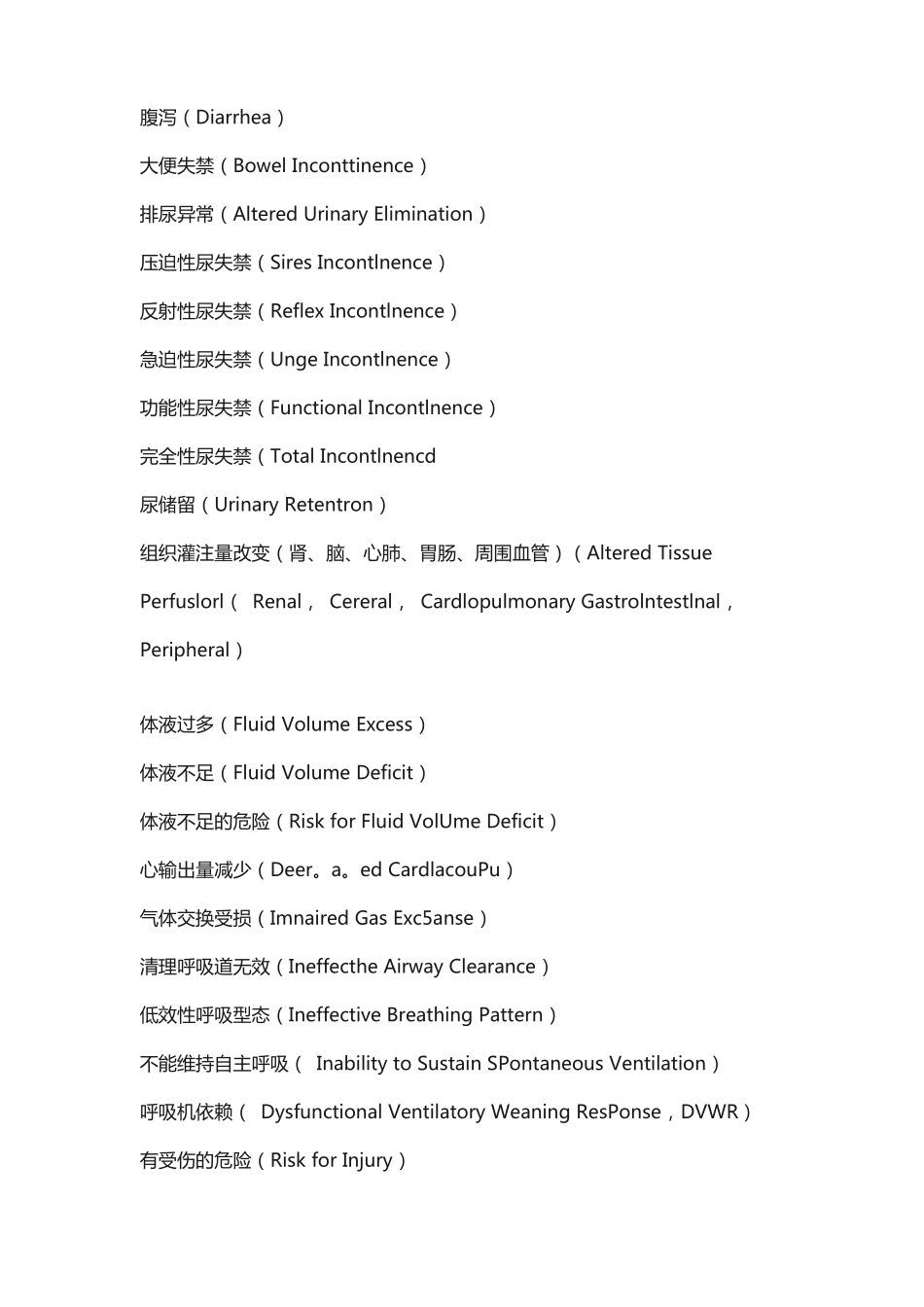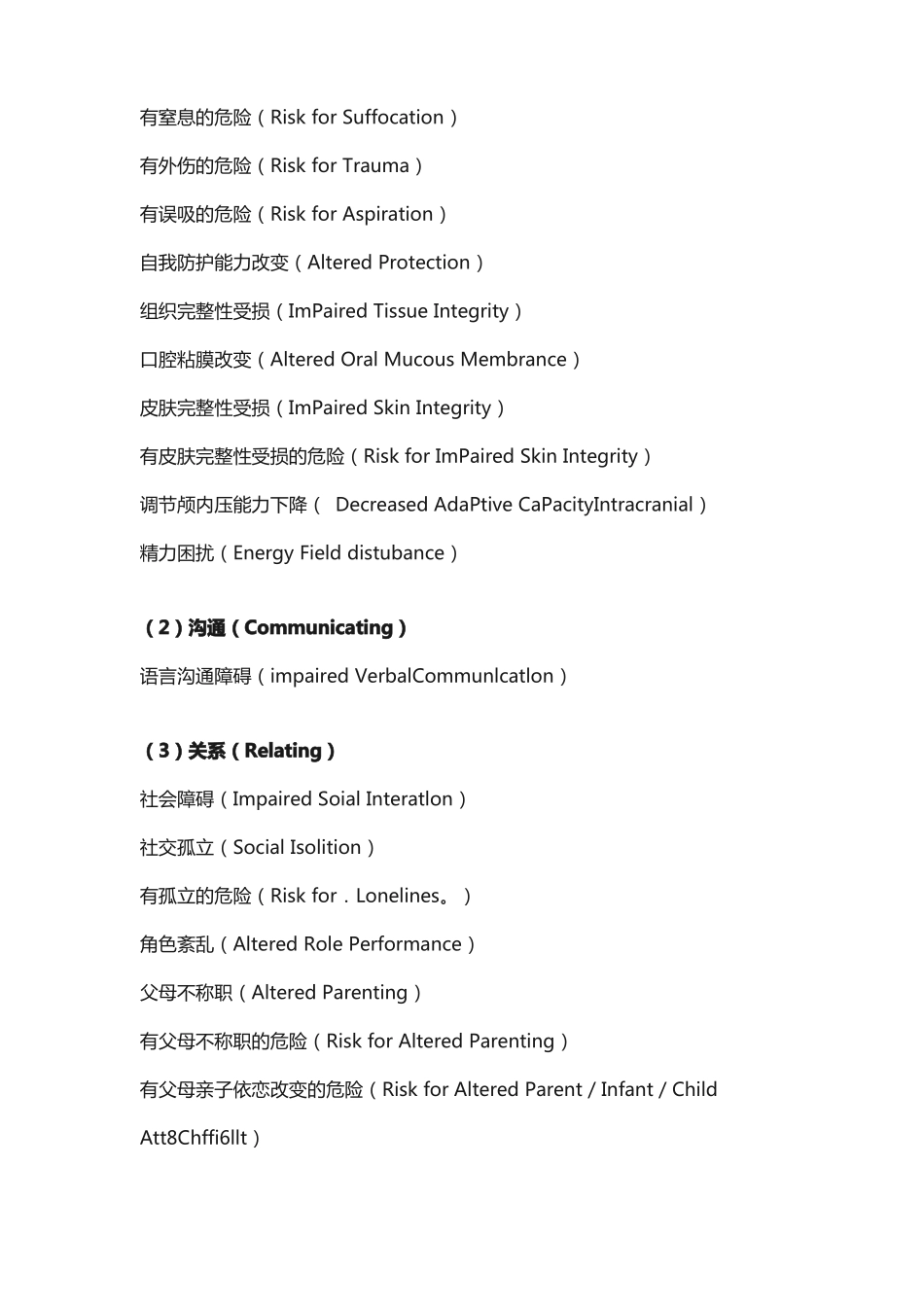护士出国- NANDA(北美护理诊断协会)128 个护理诊断NANDA(北美护理诊断协会)通过的以人类反应型态(Human ResPonse Patterns)的分类方法。现将人类反应型态分类方法的 128 个护理诊断分列如下:(1)交换(Exchanging)营养失调:高于机体需要量(Altered Nutrition:More Than BodyRequirements)营养失调:低于机体需要量(Altered Nutrition: less Than BodyRequirements)营养失调:潜在高于机体需要量(Altered Nutrition:Potential for MoreThan Body Requirements)有感染的危险(Risk for Infection)有体温改变的危险(Risk for Altered Body Temperature)体温过低(Hypothermia)体温过高(Hyperthermia)体温调节无效(Ineffective Thermoregulatlon)反射失调(Dysre flexia)便秘(Constipation)感知性便秘(Perceived Consttipation)结肠性便秘(Colonic Constipation)腹泻(Diarrhea)大便失禁(Bowel Inconttinence)排尿异常(Altered Urinary Elimination)压迫性尿失禁(Sires Incontlnence)反射性尿失禁(Reflex Incontlnence)急迫性尿失禁(Unge Incontlnence)功能性尿失禁(Functional Incontlnence)完全性尿失禁(Total Incontlnencd尿储留(Urinary Retentron)组织灌注量改变(肾、脑、心肺、胃肠、周围血管)(Altered TissuePerfuslorl( Renal, Cereral, Cardlopulmonary Gastrolntestlnal,Peripheral)体液过多(Fluid Volume Excess)体液不足(Fluid Volume Deficit)体液不足的危险(Risk for Fluid VolUme Deficit)心输出量减少(Deer。a。ed CardlacouPu)气体交换受损(Imnaired Gas Exc5anse)清理呼吸道无效(Ineffecthe Airway Clearance)低效性呼吸型态(Ineffective Breathing Pattern)不能维持自主呼吸( Inability to Sustain SPontaneous Ventilation)呼吸机依赖( Dysfunctional Ventilatory Weaning ResPonse,DVWR)有受伤的危险(Risk for Injury)有窒息的危险(Risk for Suffocation)有外伤的危险(Risk for Trauma)有误吸的危险(Risk for Aspiration)自我防护能力改变(Altered Protection)组织完整性受损(ImPaired Tissue Integrity)口腔粘膜改变(Altered Oral Mucous Membrance)皮肤完整性受损(ImPaired Skin Integrity)有皮肤完整性受损的危险(Risk for ImPaired Sk...


